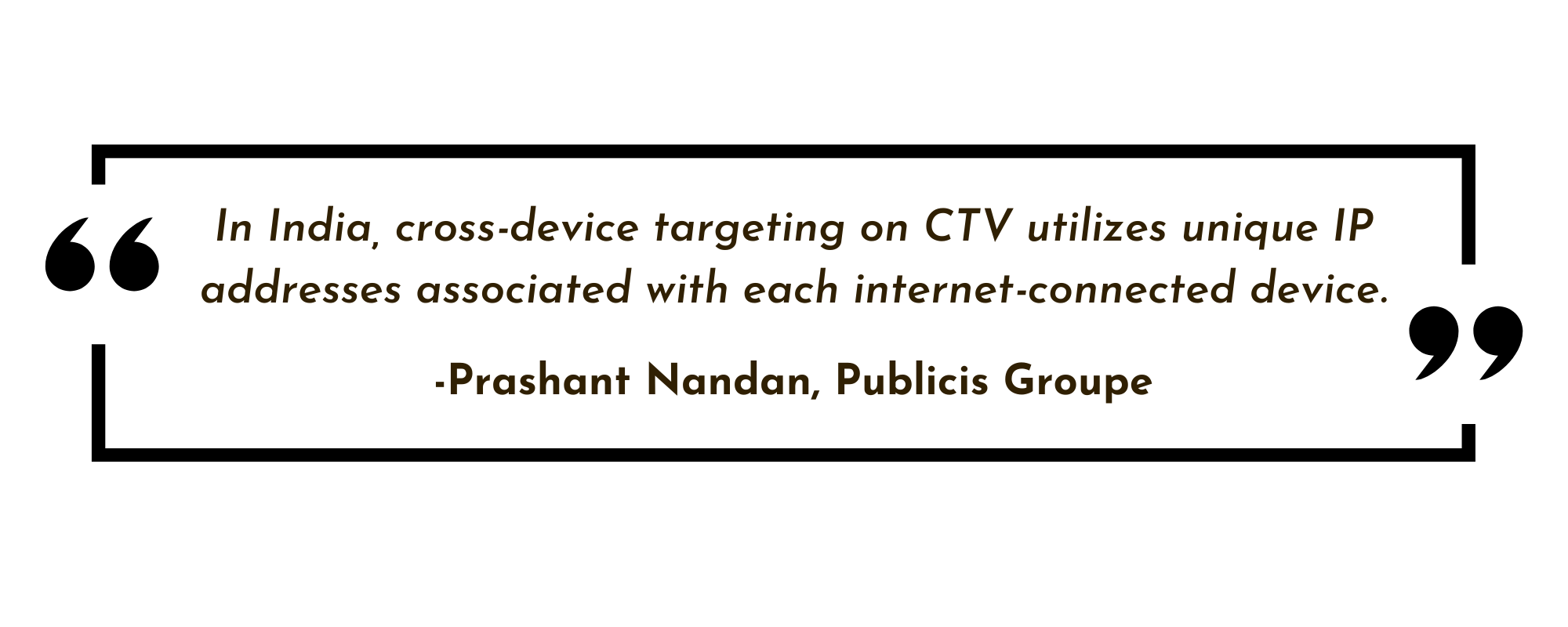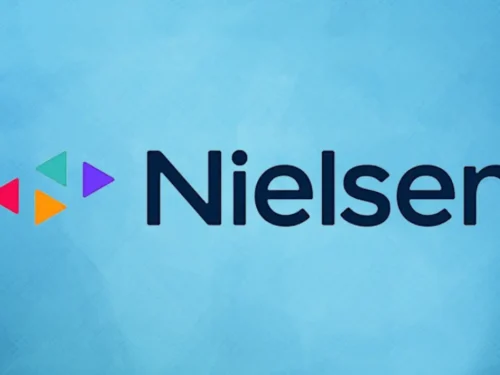Publicis Groupe’s Prashant Nandan Unveils Strategies for Connected TV Trends
Prashant Nandan, Senior Vice President of APEX at Publicis Groupe, is an experienced leader with over 15 years in digital marketing and advertising. With a deep understanding of go-to-market strategies, emerging media, and data-driven solutions, he unlocks business potential in the digital landscape. He is a visionary leader driving impactful results with proficiency in client servicing, media planning, programmatic, and more.
In this exclusive and captivating interview, he discusses effective strategies for Connected TV, transparency and Ad fraud, adapting to market dynamics, and embracing the Metaverse with AI.
Can you tell us about your journey and experience in creating go-to-market strategies across various digital channels?
My journey has taken me across mountains and oceans, through trials and triumphs, shaping me into a dreamer, a doer, and a believer in the power of determination. The digital world can be overwhelming, so I help connect businesses to digital ideas. My job spans the core areas of intelligence, investment, partnership, and innovation strategies for digital agencies and clients.
Creating go-to-market strategies: –
Each brand and market is unique, so it’s important to tailor our go-to-market strategy based on specific business goals, target audience, and industry dynamics. We regularly evaluate and refine our strategy to ensure it aligns with the brand’s evolving needs and market conditions. We help brands craft compelling and consistent messaging that resonates with the target audience and further tailor the messaging to each channel’s unique characteristics while maintaining a cohesive brand voice and identity. Adapting to changing market dynamics, we stay agile and capitalize on emerging opportunities. We are always open to experimenting with new channels or tactics based on data-driven insights and feedback from the target audience.

How do you determine the most effective mix of digital channels for a particular client or campaign?
Determining the most effective mix of digital channels for a particular campaign or client requires a data-driven approach. Here are some steps to consider:
- Clearly articulate the specific goals and objectives of the campaign. Whether it’s brand awareness, lead generation, sales conversion. Having a clear understanding of what brands want to achieve, will guide our channel selection.
- Develop a deep understanding of your target audience’s demographics, behaviours, preferences, and digital habits via different planning tools & primary/secondary research.
- Map out the customer journey from awareness to conversion. Identify touchpoints where our target audience interacts with digital channels throughout their decision-making process. Select channels that can effectively reach and engage our audience at each stage of the journey, ensuring a cohesive and seamless experience.
- Assess the strengths and capabilities of different digital channels. Consider factors such as audience reach, targeting capabilities, ad formats, pricing models, and performance metrics to evaluate how well each channel aligns with our campaign goals.
- Review past campaign data, industry benchmarks, and case studies to understand the performance of different digital channels in similar campaigns or industries.
- Manage the campaign budget and allocate resources based on the potential ROI of each channel. Evaluate the cost-effectiveness of channels by comparing factors such as CAC (Cost per customer acquisition), Cost per lead (CPL), and conversion rates. This analysis will help us optimize our budget allocation and prioritize channels that deliver the best return on investment(ROI).
- Implement robust brand safety, ad fraud, tracking, and analytics systems to monitor the performance of each channel.
How is your experience working with regional and global markets, and how do you adapt your strategies to different cultural contexts and market dynamics?
Working with different regional and global teams has given me exposure to diverse customer preferences, behaviors, and market trends. This experience provides valuable insights and learning opportunities, enabling me to refine our digital products, services, and marketing strategies. Engaging with different cultural contexts and market dynamics often fosters innovation and creativity, leading me to develop unique solutions and approaches that cater to specific client needs. I have learned to be adaptable and responsive to changing market dynamics, continuously monitoring client/internal stakeholder feedback, market trends, and the competitive landscape. This allows for timely adjustments to strategies, pricing, or product offerings to stay relevant and competitive.
What measures do you take to ensure that the programmatic campaigns are transparent and free from ad fraud?
Digital ad fraud is a major hindrance to global ADEX growth. It is now the second largest organized crime, following cybercrime. Fraudsters target newer advertising channels like Audio and CTV. The recent ICEBUCKET operation, exposed by White Ops, revealed a significant threat in the CTV space. By spoofing IP addresses of 2 million devices across 30+ countries, fraudsters made marketers unknowingly purchase CTV ad space that was served to bots. Additionally, DoubleVerify uncovered “BeatSting“, the first large-scale ad impression fraud scheme in digital audio advertising.
To combat ad fraud, all stakeholders, including advertisers, supply-side partners, device manufacturers, and server-side ad insertion, must be vigilant and implement solutions that address app fraud, device spoofing, Server-side Ad Insertion (SSAI) manipulation, non-stop ads, and malware-hijacked CTV devices. Here are tactics that advertisers can put in place to protect themselves.
- Bring a third-party vendor like Double Verify, Integral Ad Science, White Ops, Moat etc that detects fraud pre-bid level for protection against Digital ad fraud.
- Monitoring the location and device for all ads interaction & stick to premium inventory.
- All parties buying & selling video inventory should follow IAB guidelines, for CTV/OTT known as IFA ( Identifier for Advertising (IFA) series).
- Build a clean supply chain and remove the middlemen selling ad inventories.
- For Brand safety, advertisers should use keyword blocking, category blocks like sensitive, and unprofessional content, and work with the third party at the pre-bid level for brand safety.
- Pre-Bid filter of brand safety for checking App star ratings, age ratings, and store categories.
- In brand safety “Add blocking” should be available on all ad inventories to prevent ads from serving next to risky content.
- Give preference to programmatic inventory enabled with app-ads.txt.
- Avoid audience extension and long-tail “no-name” apps unless 100% transparent tracking and favorable terms and conditions are in place.
- The stringent clause at IO (Insertion order) for all level report transparency.
Can you explain the key differences between Connected TV and traditional TV advertising, and how these differences impact your go-to-market strategies?
The TV and digital industry use specific terms, like traditional/linear TV, OTT, and CTV. Here’s how to differentiate them.
| Linear TV or Traditional TV refers to the traditional method of content delivery where TV programs are only available at scheduled times. These programs are delivered by broadcast, cable, or satellite. | OTT refers to the delivery of on-demand video content through the internet by companies like YouTube, Netflix, Prime Video, and others. It allows viewers to watch their favorite shows anytime, bypassing traditional TV platforms such as cable and satellite. | CTV, or Connected TV, is a new viewing device that combines the advantages of traditional TV (shared viewing on a large screen) with digital streaming platforms (on-demand access to diverse content delivered via the internet). |
Connected TV (CTV) devices like smart TVs, gaming consoles, and streaming sticks (such as Chromecast, Apple TV, Roku) enable users to access and display two types of content on a large screen:
1) Internet-delivered programming from broadcast and cable TV networks.
2) Digital-only streaming content from platforms like YouTube, Netflix, Prime Video, and Hotstar.
Go-to-Market Strategy for CTV: To achieve incremental reach, it is beneficial to combine Linear TV and CTV strategies. Linear TV maintains a strong reach among the TV-viewing population in India, and the hybrid viewing pattern is expected to persist for years. By merging the teams responsible for linear and connected TV buying, the goal of reaching viewers on any screen can be effectively accomplished.
Here are a few ways to do it:
- First, to drive incremental reach use Automatic Content Recognition (ACR) data to segment households that were exposed to the linear TV campaign and those who had not been exposed.
- Next, target non-exposed households with ads on CTV.
- Balance your frequency by targeting light TV viewers and cord-cutters more heavily than heavy TV viewers.
- ACR can identify households watching the competition ads and target them on different digital devices.
- Combine second screen targeting (Second screening” is a term for when viewers are watching television but are also using a secondary electronic device during that time) with your TV campaign.
- CTV ads are served programmatically so you can target audiences that have streamed content by genre, movies, TV series, actors, or directors.
Connecting linear and CTV ecosystems benefits advertisers with quality inventory, cross-screen audience reach, and effective measurement and attribution.

How do you manage cross-device targeting and attribution in your Connected TV?
In India, cross-device targeting on CTV utilizes unique IP addresses associated with each internet-connected device.
- Ad-tech companies employ diverse methods to identify IP addresses of devices accessing CTV content, which serve as unique identifiers for each device.
- Ad-tech companies collect and maintain databases of IP addresses associated with specific devices or households.
- Ad-tech companies utilize device graphs, which are databases or platforms that link multiple devices to the same individual or household. These graphs combine data points like IP addresses, cookies, device IDs, and other identifiers to create a comprehensive view of cross-device behavior. By analyzing shared IP addresses and Wi-Fi network connections, patterns and connections can be assessed to identify devices likely used by members of the same household.
- Once devices belonging to a household or individual are linked through IP address matching, brands can target specific ads to those devices across CTV platforms. Advertisers can leverage audience segmentation and targeting criteria, such as demographics, interests, and browsing behavior, to deliver relevant ads to the identified devices.
It’s important to note that IP address-based targeting for cross-device advertising has limitations. Dynamic IP addresses, shared networks, and privacy measures like virtual private networks (VPNs) can reduce the accuracy and precision of device-to-household mapping.
Measuring attribution on CTV : In this evolving stage, advertisers employ multiple approaches such as ad server reporting, incremental testing, panel surveys, and other data sources to refine measurement methodologies. These efforts aim to gain a comprehensive understanding of the attribution and effectiveness of CTV campaigns.

What are some key trends you see emerging in the Connected TV and how do you plan to capitalize on these trends in your strategies?
The cord-cutting audience is expected to grow. In the next 5 to 7 years, smart televisions are projected to become the norm in India, offering on-demand content, music streaming, video calling, and personalized recommendations. These TVs will also enable social interactions, co-watching, and content sharing. Additionally, smart TVs will embrace portability through cloud computing, allowing users to enjoy their favorite content anytime, anywhere.
In the future, TVs will go beyond traditional viewing, with OEMs adding services like gaming and health & fitness. Samsung, for example, has introduced a gaming hub on its smart TVs, allowing users to play games without a console or PC. Remote-controlled TVs will become outdated as voice-based and XR-controlled smart televisions gain prominence. While shopping directly on TV interfaces is still developing and limited to QR codes, tech platforms like Amazon and Google are experimenting with shoppable content ads.
CTV platforms are increasingly integrating with data management platforms (DMPs) and customer relationship management (CRM) systems, empowering advertisers to leverage first-party and third-party data for enhanced audience targeting and campaign effectiveness.
What is your perspective on the relationship between AI and the Metaverse? Do you believe AI is dominating or overshadowing the development of the Metaverse?
If we think of Metaverse as a cake, AI is one of its crucial slices. The Metaverse aims to leverage technologies like Web 3.0, XR, AI, and Blockchain to build a scalable virtual world. While AI has become a critical technology, predictive AI predates generative AI, utilizing statistical models, data analysis, and machine learning algorithms for future predictions. However, the Metaverse won’t achieve mainstream adoption overnight, as it faces challenges that need to be addressed. Concurrency and latency are foundational issues that must be solved.
Facebook, for instance, believes the Metaverse is at least 10 years away from entire operation due to these challenges. AI will play a facilitative role in the growth of the Metaverse, automating tasks such as creating and designing virtual environments, as well as aiding in content creation like 3D modeling and natural language processing.
Author Profile

- Neha Mehta
- Neha started her journey as a financial professional but soon realized her passion for writing and is now living her dreams as a content writer. Her goal is to enlighten the audience on various topics through her writing and in-depth research. She is geeky and friendly. When not busy writing, she is spending time with her little one or travelling.
Latest Posts
 Interview and Guest PostJuly 19, 2024Navigating Ad Tech: Equativ’s Jacqueline Chua’s Strategic Insights
Interview and Guest PostJuly 19, 2024Navigating Ad Tech: Equativ’s Jacqueline Chua’s Strategic Insights Interview and Guest PostJune 21, 2024CTV Exploration: Chandrahas Shetty, Demand Facilitation Lead, India, On Growth And Privacy
Interview and Guest PostJune 21, 2024CTV Exploration: Chandrahas Shetty, Demand Facilitation Lead, India, On Growth And Privacy Interview and Guest PostJune 14, 2024Advertising Evolution: Rasha El-Ghoussaini on Snap Inc.
Interview and Guest PostJune 14, 2024Advertising Evolution: Rasha El-Ghoussaini on Snap Inc. Interview and Guest PostJune 5, 2024Navigating Digital Waves: Shrenik Gandhi’s Journey with WRM
Interview and Guest PostJune 5, 2024Navigating Digital Waves: Shrenik Gandhi’s Journey with WRM










